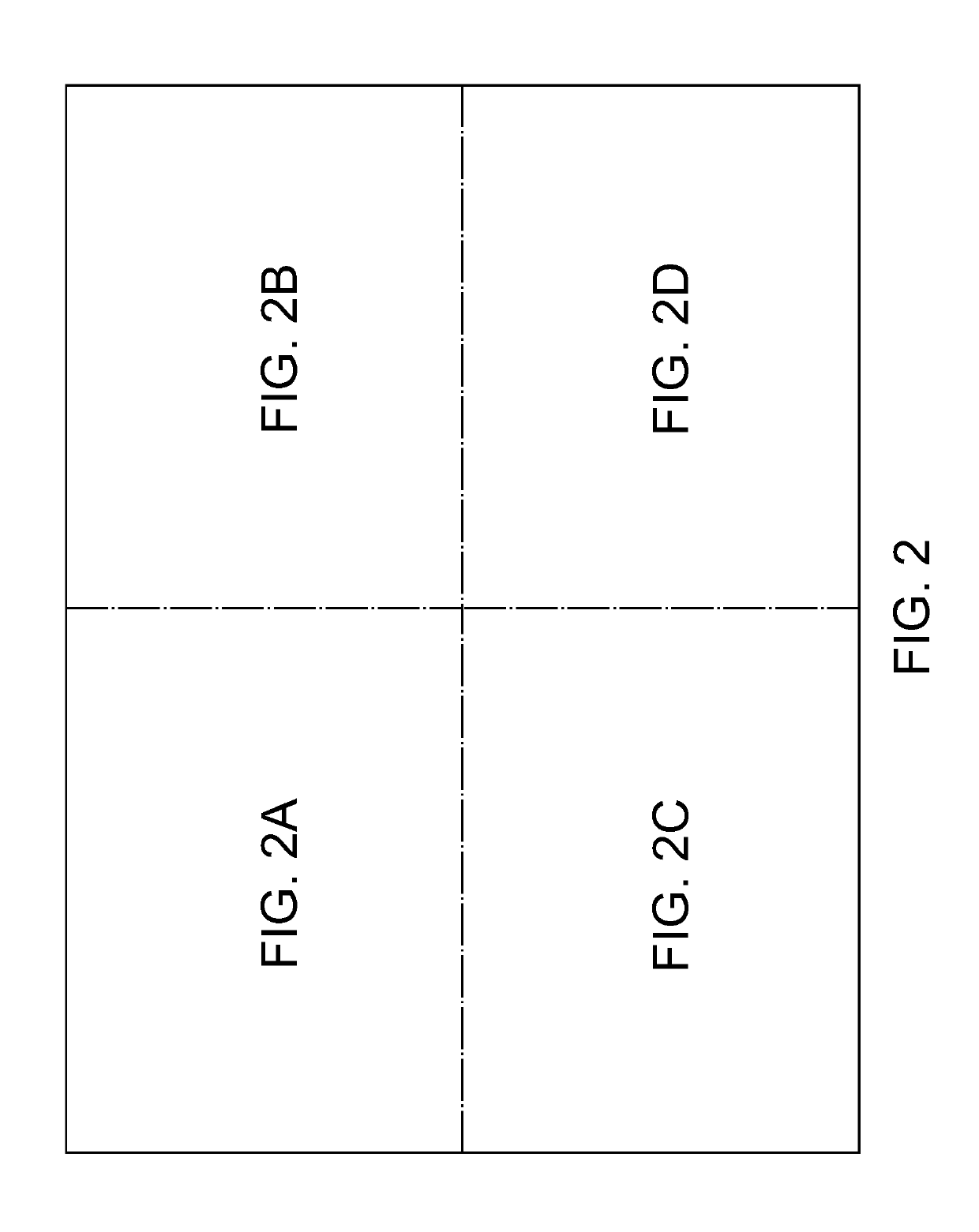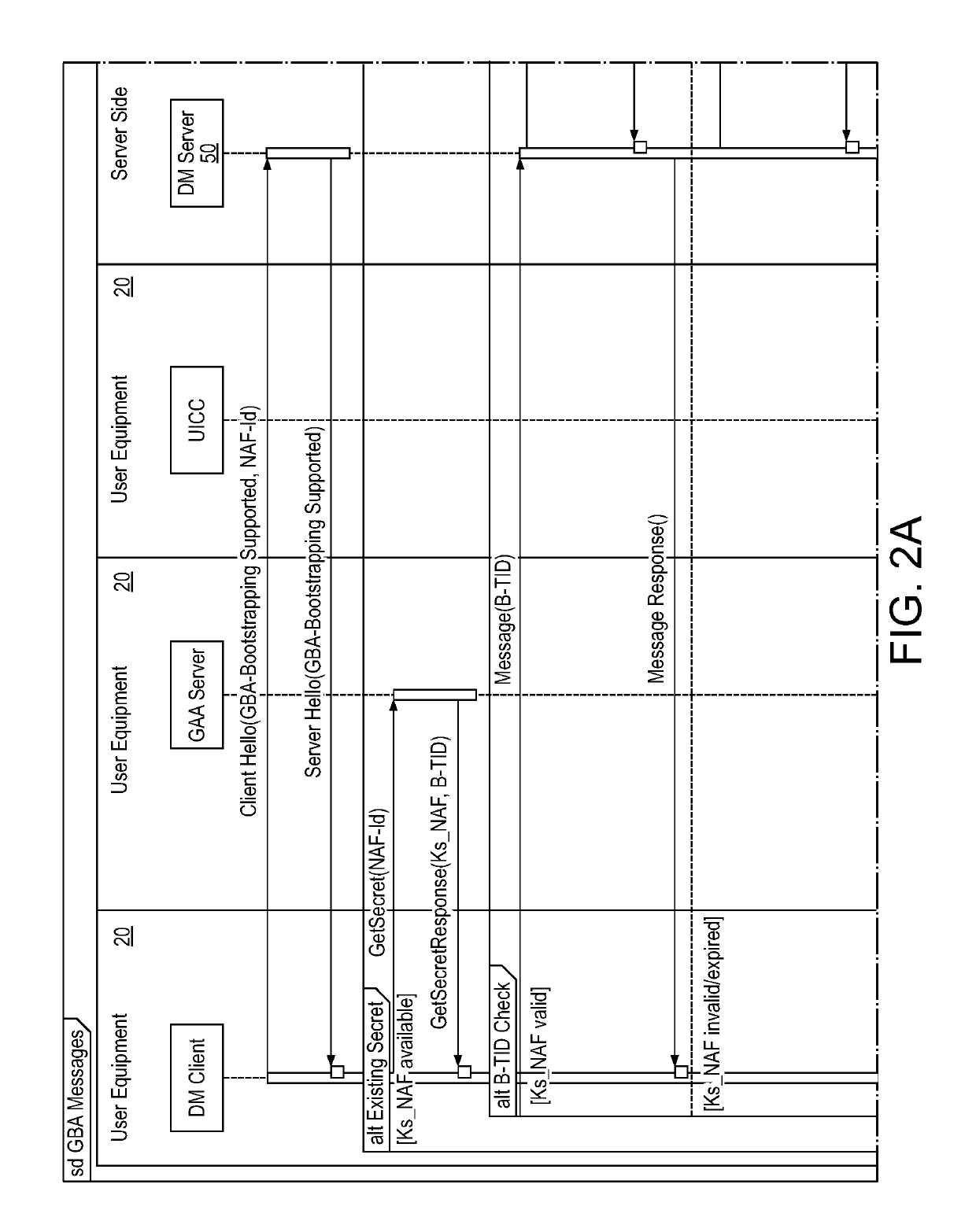Generic bootstrapping architecture protocol
a technology of bootstrapping and architecture, applied in the field of generic bootstrapping architecture protocol, can solve the problems of affecting the stability of the network, so as to achieve the effect of reducing the number and volume of messages and improving the security
- Summary
- Abstract
- Description
- Claims
- Application Information
AI Technical Summary
Benefits of technology
Problems solved by technology
Method used
Image
Examples
Embodiment Construction
[0075]The Ub interface of GBA allows messages or communications to be sent between one or more UEs 20 and a BSF 30 (see FIG. 1). This Ub interface is replaced by a proxy 110, intermediary, or proxy server. In one embodiment, this proxy 110 is placed on the same server platform that hosts the NAF 40. This may be a device management (DM) server 50 platform, for example. The proxy 110 solves the security problem of a direct connection between UE 20 and BSF 30. The proxy can filter and inspect the Ub protocol to ensure that messaging is well-formed and consistent with the GBA standard, before passing messages on to the BSF. It also can assist where UEs do not support an HTTP stack because the proxy can perform protocol translation if necessary. This revised flow (including the proxy 110) is shown in FIG. 2. In particular, the flows involving the proxy 110 are circled 100.
[0076]A simplified diagram (omitting the initial exchanges on the Ua interface) is shown on FIG. 3. This figure inclu...
PUM
 Login to View More
Login to View More Abstract
Description
Claims
Application Information
 Login to View More
Login to View More - R&D
- Intellectual Property
- Life Sciences
- Materials
- Tech Scout
- Unparalleled Data Quality
- Higher Quality Content
- 60% Fewer Hallucinations
Browse by: Latest US Patents, China's latest patents, Technical Efficacy Thesaurus, Application Domain, Technology Topic, Popular Technical Reports.
© 2025 PatSnap. All rights reserved.Legal|Privacy policy|Modern Slavery Act Transparency Statement|Sitemap|About US| Contact US: help@patsnap.com



